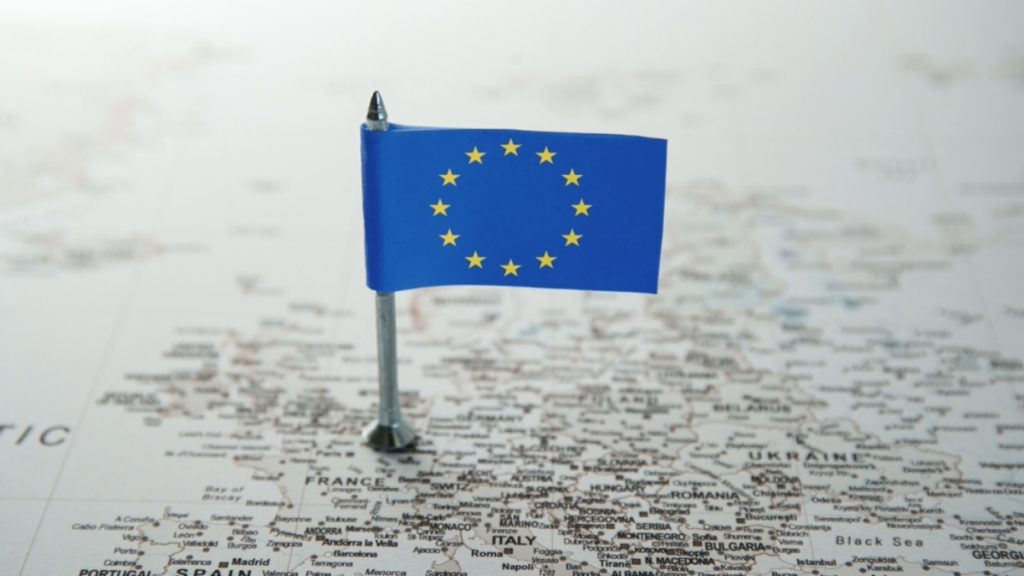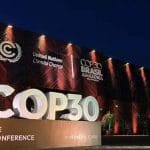EU Sets 2040 Climate Target with 90% Emissions Reduction

- New 2040 Climate Target: EU proposes a 90% reduction in net GHG emissions by 2040 (vs. 1990), introducing flexible mechanisms including international carbon credits and permanent carbon removals.
- Clean Industrial Deal Aligned: The target supports industrial competitiveness, energy security, and a fair transition through new tax incentives, state aid, and CBAM simplification.
- Strategic Global Positioning: Reinforces EU’s Paris Agreement commitments ahead of COP30, shaping global climate leadership and sustainable investment flows.
The European Commission has proposed an amendment to the EU Climate Law, setting a 2040 target to reduce net greenhouse gas (GHG) emissions by 90% compared to 1990 levels, in line with the bloc’s legally binding 2050 climate neutrality goal. This milestone proposal provides a pragmatic and flexible roadmap to climate neutrality, balancing environmental ambition with industrial resilience and investment certainty.
“As European citizens increasingly feel the impact of climate change, they expect Europe to act. Industry and investors look to us to set a predictable direction of travel,” said European Commission President Ursula von der Leyen. “The goal is clear, the journey is pragmatic and realistic.”

Legal and Political Foundation
The proposal fulfills a legal requirement under the European Climate Law, which mandates an intermediate 2040 target following the first Global Stocktake of the Paris Agreement (December 2023). The proposed target builds on the existing 2030 target of a 55% emissions reduction, with the EU currently tracking at a 37% reduction as of end-2023, despite 68% economic growth since 1990.
The Commission emphasized strong public backing, citing the 2025 Climate Eurobarometer, which found that 85% of EU citizens see climate change as a serious issue, and 81% support the EU’s 2050 neutrality goal.
Flexibility Measures and Sectoral Integration
To accommodate varying national and sectoral capabilities, the proposal introduces new flexibilities:
- Use of high-quality international carbon credits from 2036 onward (up to 3% of 1990-level emissions).
- Integration of permanent domestic carbon removals into the EU Emissions Trading System (EU ETS).
- Sectoral balancing—e.g., surplus reductions in waste or transport may offset land-use sector shortfalls.
These measures are designed to ensure cost-effective, socially fair implementation, tailored to national contexts and economic realities.
Clean Industrial Deal: The Economic Backbone
The 2040 target is closely tied to the Clean Industrial Deal, launched in early 2025 to secure Europe’s industrial competitiveness while decarbonizing key sectors. Key deliverables to date include:
- Clean Industrial Deal State Aid Framework (June 2025): Eases financing for clean-tech and energy-intensive sectors.
- Simplification of the Carbon Border Adjustment Mechanism (CBAM): Exempts 90% of importers—mostly SMEs—from complex reporting requirements. A comprehensive CBAM review is scheduled for year-end.
- Tax Incentive Recommendations: Introduces accelerated depreciation and tax credits for clean technology and industrial decarbonization.
- Support for Power Purchase Agreements (PPAs), grid component manufacturing, and the upcoming Industrial Decarbonisation Bank.
A Chemicals Industry Action Plan and sector-specific dialogues are underway to align regulatory frameworks with the 2040 transition.
“We are not choosing between the economy and the green agenda, we are choosing both,” said Teresa Ribera, Commission Executive VP for Clean, Just and Competitive Transition. “Europe reaffirms its commitment to a fair, ambitious, and competitive green transition.”

Funding and Investment Needs
To meet the 2040 goals, the Commission estimates annual investments of:
- €660 billion in the energy system
- €870 billion in the transport sector
These funds will drive clean industrial transformation, electrification, alternative fuels, and innovation across sectors.
International Climate Leadership
The 2040 target underpins the EU’s updated Nationally Determined Contribution (NDC), to be submitted ahead of COP30 in Brazil (November 2025). It signals the EU’s continued commitment to multilateralism and the Paris Agreement’s 1.5°C target.
While the limited use of international offsets sparked criticism from environmental groups like WWF and Greenpeace—who caution it could undermine domestic investment—others welcomed the move.
RELATED ARTICLE: EU Sets Ambitious 2040 Climate Target: A Path to Neutrality
South Pole CEO Daniel Klier called it “a pivotal moment for global carbon markets,” adding that it could “channel much-needed finance to climate-vulnerable countries.”

The Commission stressed that any use of offsets will adhere to robust, high-integrity standards, and only be drawn from Paris-aligned partner countries.
Next Steps
The proposal will now undergo the ordinary legislative procedure in the European Parliament and Council. Once adopted, it will:
- Serve as the benchmark for post-2030 EU climate and energy legislation
- Guide the 2035 indicative target in the upcoming NDC
- Shape future policy architecture, focusing on simplicity, fairness, and convergence across Member States
The Commission also committed to future impact assessments, stakeholder consultations, and legislative reviews, ensuring the policy remains adaptive and grounded in science and economic viability.
Bottom Line:
The EU’s 2040 climate target is more than a number—it’s a strategic framework tying environmental ambition to economic strength, global leadership, and social resilience. By embedding flexibility and support mechanisms, the EU seeks to ensure that its clean transition is both achievable and globally influential.
Questions and Answers on the 2040 EU Climate Target Proposal
1. Why is the Commission proposing a new 2040 EU climate target now?
The European Climate Law mandates a 2040 target to stay on the path to climate neutrality by 2050. The first Global Stocktake in December 2023 under the Paris Agreement triggered the obligation to propose this new target. The Commission aims to provide a stable and predictable policy environment to support long-term investments, meet international climate commitments, and respond to strong public support—evidenced by 85% of EU citizens viewing climate change as serious.
2. What are the main elements and benefits of setting this climate target now?
The 2040 target:
- Sends a clear signal of certainty to businesses and investors.
- Introduces flexibility mechanisms, including limited international credits and carbon removals.
- Supports a fair, competitive, and resilient economy, reducing future climate risks and enhancing energy security.
It also aligns with the Clean Industrial Deal, Competitiveness Compass, and Affordable Energy Action Plan, forming a cohesive policy suite for the EU’s transition.
3. Is the EU able to reach a 90% emissions reduction target by 2040, and what is the role of the Clean Industrial Deal?
Yes. The EU is already approaching its 2030 goal of 55% reductions. According to NECP assessments, current national plans could deliver ~54% cuts. The Clean Industrial Deal is critical—it offers:
- State aid flexibility
- Support for clean-tech industries
- Simplified permitting and carbon management infrastructure
With targeted funding mechanisms and enhanced coordination, the EU is positioned to achieve the 2040 target while boosting its industrial edge.
4. What role will international carbon credits and carbon removals play in achieving the 2040 climate target?
Domestic reductions remain the cornerstone. However:
- Up to 3% of the 2040 target may be achieved using high-quality international carbon credits under Article 6 of the Paris Agreement, starting in 2036.
- Domestic carbon removals (e.g., BioCCS, DACCS) will be allowed in the EU ETS to compensate for residual emissions.
Strict criteria will govern the integrity, timing, and origin of these credits, ensuring alignment with EU goals and Paris commitments.
5. How will the 2040 EU climate target contribute to the EU’s Nationally Determined Contribution for 2035?
The 2040 target provides a benchmark for the EU’s updated NDC, due before COP30 in Brazil (Nov 2025). The NDC will include an indicative 2035 target, shaped in collaboration with Member States and the Council Presidency. This will solidify the EU’s leadership role in climate diplomacy and signal ambition to global partners.
6. What are the next steps towards a 2040 legislative policy framework?
The proposal will be debated and adopted by the European Parliament and Council under the ordinary legislative procedure. Post-adoption, the Commission will:
- Design a simpler, more flexible post-2030 framework
- Conduct new impact assessments
- Incorporate lessons from the 2030 cycle
The framework will address Member State specificities while enabling convergence and supporting social and economic resilience.
Follow ESG News on LinkedIn








